Labrador color variations
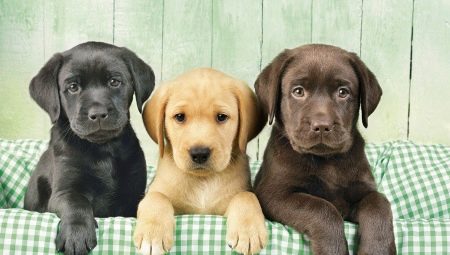
The Labrador Retriever is a very friendly breed of dog that has served faithfully to humans for many years. The exact origin of the species is still unknown. During its service to humans, the breed has undergone many changes associated with its appearance. Today, there are several options for the colors of these animals.
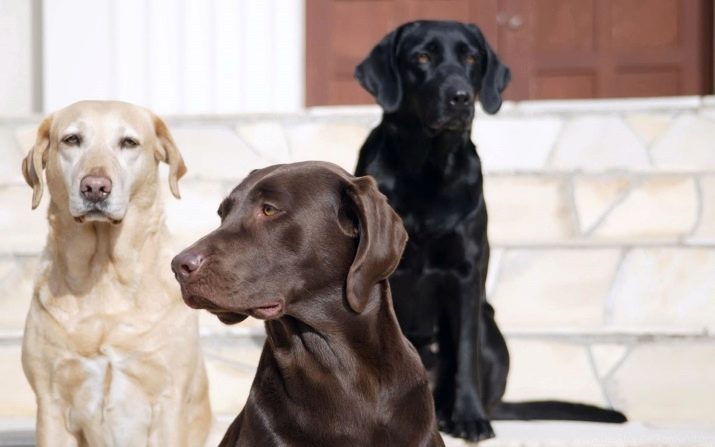
Breed standard and genetics
The first representatives of this breed had only black color, for which they received their current name. Labrador is a dark-colored semi-precious stone found in the North American continent. In the 19th century, the exclusively black color of the described breed was officially recognized. By the end of the century, experts were able to breed individuals of a brown and fawn shade. Currently, the colors recognized by the breed standard are as follows:
- black - pets with this color have a similar color for the eyelids, lips and nose;
- chocolate - animals of this shade have brown pigmentation;
- pale yellow - individuals are distinguished by light hair (the shade can vary from close to white to red), while their lips and nose are black.
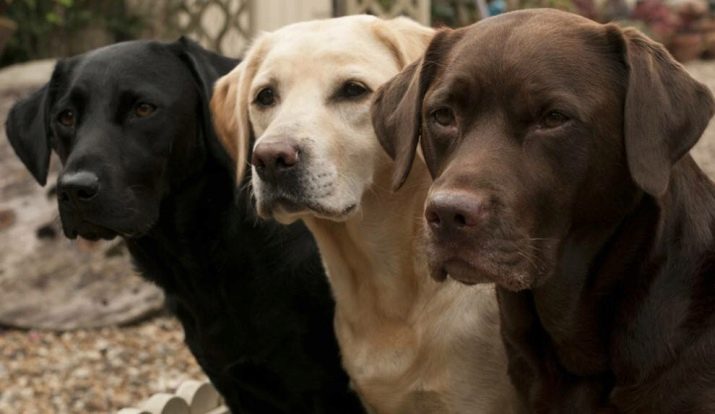
When breeding Labradors, you cannot guess what color the puppies will be. The color of the parents does not matter.... In order to at least roughly predict the color of the puppies, specialists should study their pedigree in detail, but even such a serious approach is not a guarantee of 100% success.
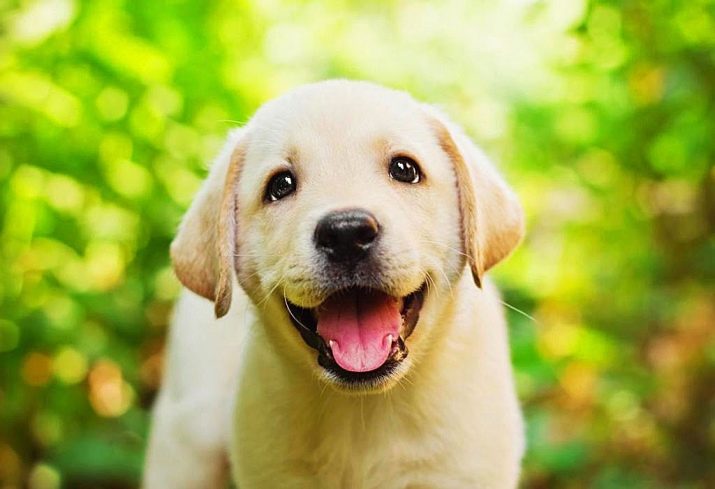
This breed is unpredictable and has not been thoroughly studied.
Varieties
Black
This beautiful color aroused the interest of Europeans more than 100 years ago. Dark Labrador Retrievers are more the rule than the exception.This color is recognized as dominant, therefore, if the gene responsible for black is present, then the dog will only have a dark coat color. Such animals look spectacular. There is not a single spot on their glossy coat, except for a tiny speck on the chest of a snow-white shade, which is not always visible in this species.
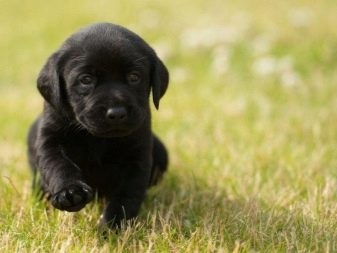
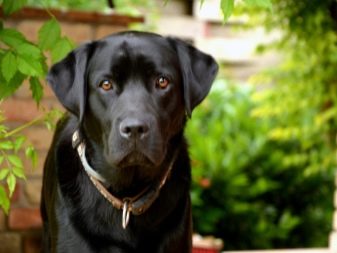
The eyes of these pets are usually brown, although the color of dark chocolate is considered ideal.
Chocolate
This is the rarest color of the described breed, so a puppy with this shade of wool is much more expensive than others. Among all colors similar to chocolate are considered acceptable:
- light chocolate;
- hepatic;
- bitter chocolate.
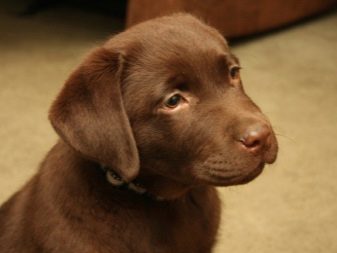
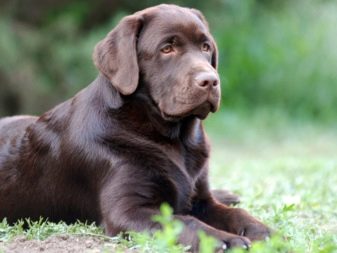
These puppies should have a solid coat. The requirements for color exclude the presence of spots of other colors (with the exception of a light spot on the chest - it is considered acceptable). When buying such a pet, you need to be very careful. Irresponsible breeders will try to cash in on the buyer's ignorance.
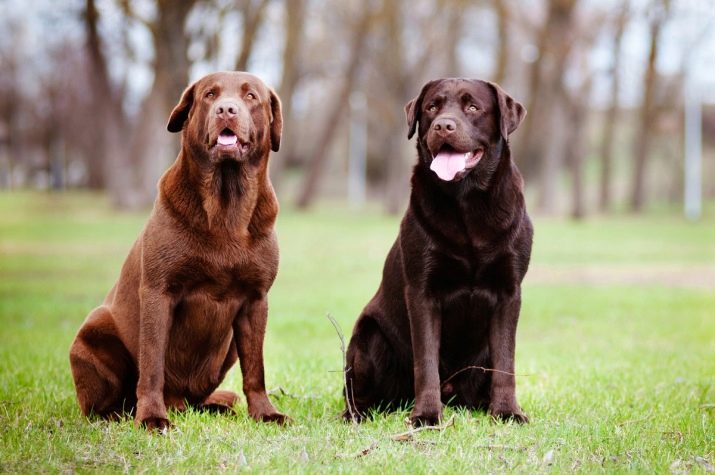
The eyes of the described four-legged friend should be brown, although shades close to yellow are allowed.
Pale yellow
For a very long time, the beige color of the puppies was considered a marriage. This color was included in the standard only in 1924. Nowadays, the situation has changed a lot: the colors have become quite popular, and many breeders are specifically trying to get this particular color. In this form, individuals of such colors are allowed:
- golden;
- cream;
- almost ginger;
- sand (light);
- gray.
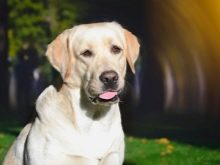


It should be noted that a snow-white labrador is unknown to geneticists. Fawn pups may have a light color that is as close to white as possible, but it is not pure white. In the case when a fawn dog is next to a black one, only then will it appear white against a dark background (but only appear). The color of the eyes in this color is brown, and the pigmentation of the muzzle is dark.
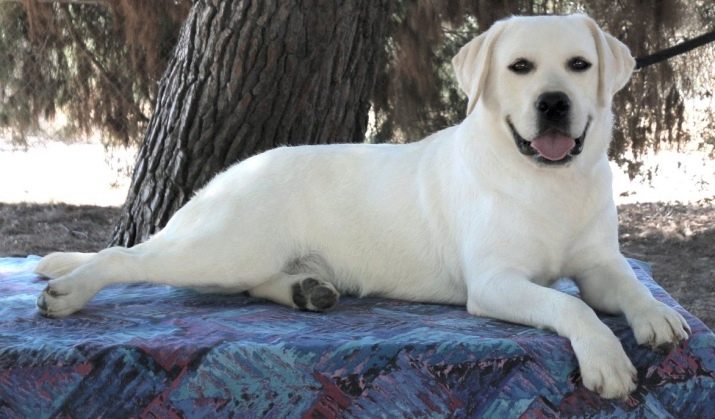
Unusual colors
The number of colors of Labradors is not limited to 3 options. The rest are simply not included in the standard, the dogs will not be able to compete for the first place at exhibitions. However, many dog breeders are looking for non-standard animals. For these purposes, non-trivial colors are suitable.
- Dudley Is usually a fawn labrador retriever with no pigmentation in the nose and around the eyes. The eyes of such animals are even green. But this option is not valid for the standard.
- Silver... Silvery individuals were bred thanks to the tremendous work of breeders. The color is not recognized as a standard, although it is in demand among ordinary dog breeders, since the pets have a beautiful gray coat. According to the laws of the market, demand creates supply, so many breeders offer original silver colors for purchase for a lot of money.
- Blue eyed - they are very difficult to find, but many want to buy a dog with just such a feature.
- Pale yellow with chocolate pigmentation.
- Spotted - black and white puppies of this color look very beautiful. Dogs with spots on their bodies and paws are also not allowed by the breed standards, which makes them unpopular among dog breeders who want to purchase a pet for further participation in various exhibitions and competitions. But this unusual color is of interest to many breeders today, so puppies of this type are dismantled quickly.
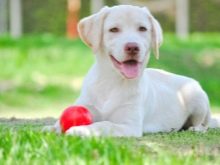
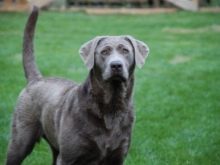
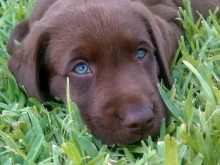
What does it affect?
Many people wonder if color influences the character and behavior of a dog. After all, black labradors look very impressive (it's better not to joke with them), and light ones look like plush toys. The first impression is deceiving, and the color does not affect anything at all.
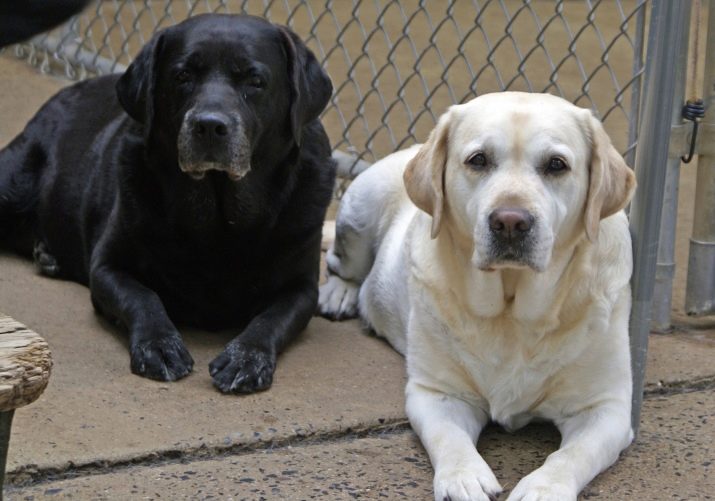
It all depends on how you raise and educate your pet.
These dogs are good companions and rescuers. Many people use them as a hunting option. And also they give in to training without problems.A dog of any color will be cheerful, agile, loyal to its owner.

It should be noted that the red Labrador is very fading in the sun, but, given the activity of these animals, it is not possible to keep them constantly in the shade. For this reason, the color of the animal can be uneven in summer. In winter, of course, he will return to normal. Therefore, this is not worth worrying about.
How to choose?
When choosing a puppy, you need to be guided not only by useful advice, but also by common sense, taking into account certain details:
- why and how you will keep a particular dog;
- consider how active she is;
- assess your capabilities: whether you can devote the right amount of time to her;
- how much space will be reserved for her space.
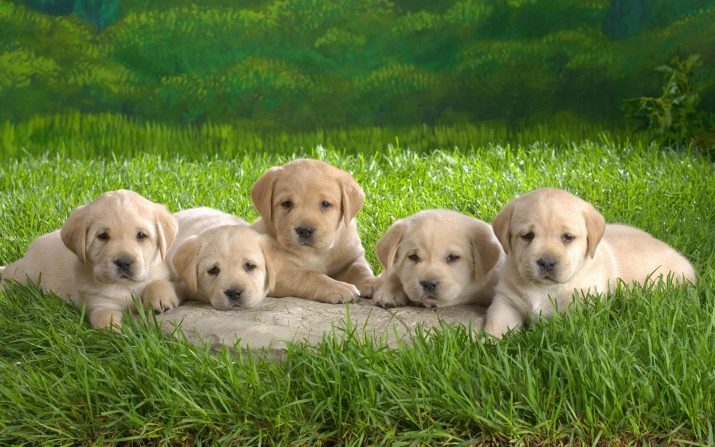
A large dog needs a lot of space, and you also need to decide if you are taking a puppy for further breeding or as a friend. Having studied all the nuances of this breed and having made a firm decision to buy such a dog for ourselves, we begin to search for a breeder. It can be either a professional club or a private breeder. Then you need to inquire about the presence of puppies, if there are few of them, you need to be extremely careful, since first of all, the strongest and most active are dismantled.

And also it is necessary to inquire about the pedigree of the parents and see the results of the study of their health.
The purchased puppy must be at least 1.5 months old. All vaccinations must be given to him. During the inspection of the individual you like, you need to pay attention to some features:
- color standard;
- complete coloration of the mucous membrane of the nose and lips;
- the baby must be active and friendly;
- not show fear and bouts of aggression;
- must be proportional, move confidently;
- special attention should be paid to the correct bite.
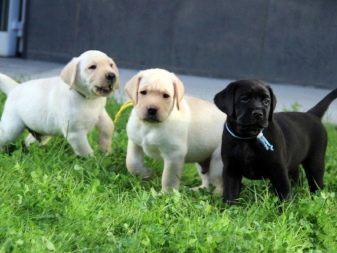
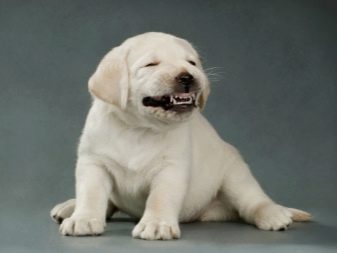
Helpful hints.
- If you are getting a Dudley dog, then you should take into account that at times it may not show the best behavior. The reason for this is that pets of this color often have vision and hearing problems.
- Labradors of any color are great lovers of bath procedures. Bathe your pet in time, play with it in the water.
- All fawn (yellow) Labradors can be disqualified if they do not have a characteristic contrasting with the general color of the skin around the eyes, nose and gums, there will be a different shade of the iris of the eyes or there are spots on the coat (brown or white).
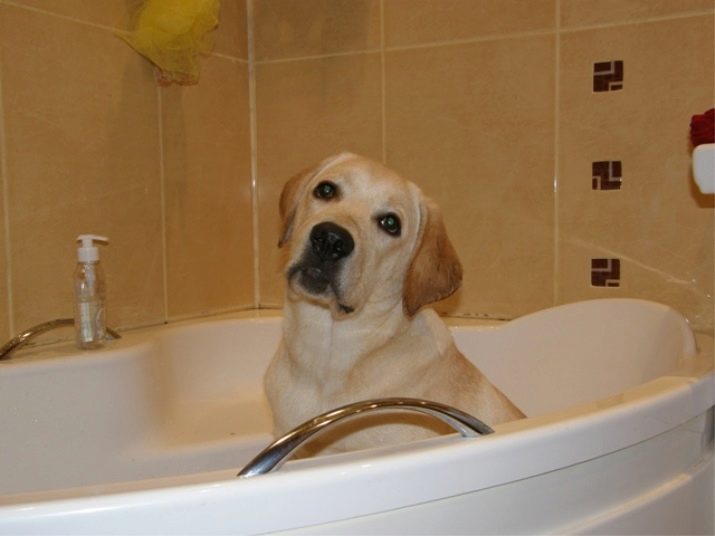
See below for color variations of Labradors.






































